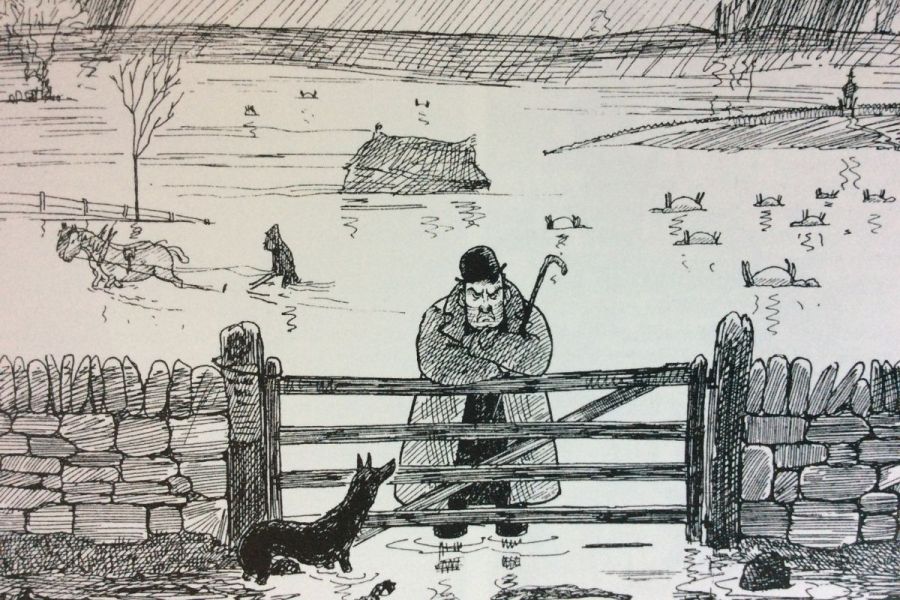By Guy Smith
When, in a wet summer, you’re harvesting crops that suffered from a spring drought, it’s difficult to not think there’s a vindictive weather god in charge, or that you must have done something very wrong in a previous life. Then again, it’s important to remember that when we signed up for this old farming job, no one told us the weather would usually be to our liking.
So whereas in Harvest 2022 most of the wheat came in at between 10-15% moisture, in 2023 it was in the 15-20% bracket. In my dafter moments I wondered if the millers would cut us some slack when it came to taking in wet wheat as a gesture of appreciation for all the dry stuff they had last year.
I’m told there’s plenty of the 2022 harvest still kicking about so maybe someone, somewhere, has actually blended crop from the two harvests together to come out with an optimal 15% moisture.
The decision to harvest wet crops that’ll require drying is always one of the more tortured ones in the farming firmament. It involves studying the long-term forecast which you don’t really trust. It also requires an assessment of whether the crop will lose value if left out in the field.
On that note, the inch of rain that hit our farm during the first week of August turned 40ha of milling wheat from profit to loss, such is the value of the milling premium this year. On a brighter note, the 40ha of Crusoe harvested barely ripe at 19% moisture before the rain arrived preserved its’ premium status. Such was the value of the drier we had on hire from the ever helpful Master Driers of Bures.
While I was brain aching over this ‘to dry or to wait’ dilemma it was interesting to read some analysis by the AHDB looking at the cost of drying against the alternative of leaving it in the field. Their conclusion was that: “If there’s chance to wait for your grain to naturally dry somewhat in the field, it may pay dividend in the end and lower input costs. Leaving it out was always the better option.”
Reading it made me wonder why farmers bother to have on-farm driers or send their wheat to the coop for drying. The reason, of course, is that you can’t just order sunny weather in the same way you can order drier fuel. The fact the AHDB had ignored this rather obvious fact makes you wonder if some of their reports are rather desk-bound and lack a bit of real world farmer nous.
With a levy hike in the offing next year, now is not the time for the AHDB to be suggesting that farmers can’t do the maths when it comes to the decision whether or not to cut wet crops and dry them. To be clear, I value a lot of the reports and analysis the AHDB does, particularly the invaluable Recommended Lists.
But the AHDB is also sometimes adept at coming out with patronising drivel that I really don’t want my levy money spent on. Hopefully some of the new leadership at the AHDB and the incoming new CEO will grasp this nettle to make sure all work is well-researched and farm proofed to make sure levy money is always giving levy payers good advice and good value. Our industry requires effective and accountable levy boards, not ones made lazy by the compulsory nature of what is a para-fiscal tax.
This article was taken from the latest issue of CPM. For more articles like this, subscribe here.
Sign up for Crop Production Magazine’s FREE e-newsletter here.




